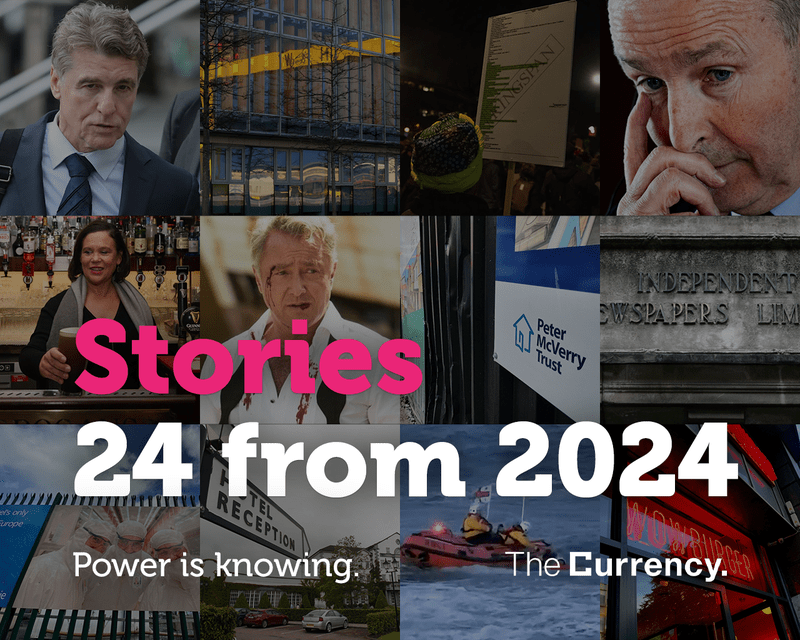In April, a seven-year-old girl slipped into the rough seas off Dún Laoghaire pier. The bravery of three RNLI volunteers saved her young life. Tom Lyons was in the area. He witnessed and filmed the heroic rescue.
The video he posted went viral, a tribute to the heroism of those involved in the rescue. In the days that followed, he interviewed the rescuers, and he then told their story in an in-depth feature of the rescue. The piece was published on this site and it sits outside the paywall.
It was not a typical piece for us to publish, but it was an important story nonetheless.
At the end, he wrote: “This had been a good outcome, but it didn’t always turn out that way, so it was important for volunteers to support each other. The girl had survived partly because of fortune. The air pockets in her jacket had helped, but she had positioned herself on her back in a star shape with her ears in the water and had not panicked.
“The RNLI had run campaigns promoting Float to Live; whether she knew about it or not, the child had demonstrated how this technique could keep people alive long enough to be saved. After the volunteers finished their debrief, they left their base, and faded into the now dark streets of Dún Laoghaire.”
Over the past year, we have published stories across a range of subjects – from financial skullduggery to corporate malfeasance to the wonder of the human spirit.
Some are long-form pieces of journalism. Others are exclusive stories. On other occasions, we are bringing commentary to a complex subject or analysing dense public policy.
In many cases, we use photographs taken by our photographer Bryan Mede, and I want to credit the professionalism and quality of his work.
Here is a selection of 24 pieces that tell the story of the year, as told by our writers.
How 200 companies and 700 documents tell the story of the fallen star of Irish hospitality

From its birthplace on Dublin’s south quays, by 2022, the Press Up group ran a portfolio of over 50 pubs, restaurants, hotels and venues reaching from Wicklow to Galway, with more in the pipeline. According to company figures, it had more than 1,600 employees and €150 million in revenue.
It was a staggeringly ambitious expansion led by Paddy McKillen Jr and his business partner Matt Ryan. This year, however, control of the group changed hands amid a massive restructuring.
In a debt-for-equity takeover, Cheyne Capital, a London-based finance house that was owed €45 million by Press Up, took control of the business with McKillen Jr holding onto a small stake of less than 10 per cent. Cheyne is injecting some €20 million in fresh capital into the group and has installed its own management and restructuring team.
Meanwhile, a number of pubs and hotels in the group were sold off, while independent landlords and high-net-worth backers initiated legal actions against the group and its founders for money before the High Court.
As Thomas asked in September: “How did it come to this? And can McKillen Jr and Ryan find a new balance for what remains of their sprawling conglomerate?”
To help answer these questions, Thomas analysed more than 700 documents filed by more than 200 companies to tell the story of how Ireland’s once fastest-growing hospitality empire became entangled in a choking web of debt.
Days after unpicking the complex corporate structure, Thomas explained the rationale for it. Essentially, McKillen Jr and Ryan packaged the trading and property assets behind their hospitality group in a way that let them maximise debt and manage risk, but there were downsides too.
Waste not, want not — Part 1: Eamon Waters builds up a new recycling empire

In 2021, Eamon Waters, the Co Meath entrepreneur, took home a large slice of the €1.2 billion sale of his Beauparc waste empire. Based on its shareholdings, his Sretaw family office earned €745 million from the deal. This put Waters’s estimated personal stake at close to €632 million, making him one of Ireland’s richest individuals as he turned 61.
In the years since the deal, Waters has gone about deploying that capital. Deal has followed deal. Investment has followed investment. He is one of the most prolific acquirers of property in the country.
Niall and Thomas examined Waters and his vast financial arsenal as part of a three-part investigation into how the waste tycoon is reinvesting funds from the sale of Beauparc. As they argued, Waters is writing a new chapter in his career with the potential to reshape parts of Irish industries, starting with waste recovery.
Over five months, Niall and Thomas analysed hundreds of documents revealing the extent of Waters’s investments since the sale of Beauparc. Part 1 explored his plans ranging from a gas filling station in Dublin to plastics recycling plants in the Midlands and biogas generation in Waterford. It also revealed that, while Waters did sell out of Beauparc, he is still in business with his former company.
Part 2 covered his property, hospitality and agricultural investments, while Part 3 explained the sophisticated corporate and financial structure established to run his Sretaw family office
Opportunity knocks: The future of independent television in Ireland

In March 2021, The Currency sat down with Pat Kiely. Kiely had just recently left his job as managing director of Virgin Media Television to launch BiggerStage, a television production company he believed could carve out a profitable niche developing content for overseas markets on behalf of international networks.
It was, pardon the pun, a virgin market. No one else was doing it. But, as he explained the model, Kiely was evangelical about its potential. “The opportunity for us as a business is to be outward-facing, to look at the opportunities outside of Ireland and use that to help fuel the ambition for the business within Ireland,” he told The Currency.
Four years and a partnership deal with Fox Entertainment later, the model has been validated. As Francesca reported, the company is now a major FDI business, channelling millions of dollars of investment into Irish TV production. The output, for the most part, is a series of shiny-floor Fox gameshows, made in Ireland for a US audience including The Floor, Name that Tune, Next Level Chef, and Beat Shazam.
Francesca spoke at length to the company and to others within the independent television production sector including Screen Producers Ireland (SPI), Ardmore Studios, and the heads of three of the independent production companies that make up the backbone of Irish TV output: Debbie Thornton of Animo, Linda Cullen of COCO Content and Darren Smith of Kite Entertainment.
Against the backdrop of a struggling RTÉ, this piece aims to highlight the work of the independents, their increased importance going forward, and what they need to continue delivering quality popular programming with or without a public service remit.
As Francesca put it: “The result is a story about renewal, ingenuity and opportunity in an industry that may once have felt its best days were in the past.”
The real capital of (derelict) Ireland: Cork, ground zero of the dereliction crisis
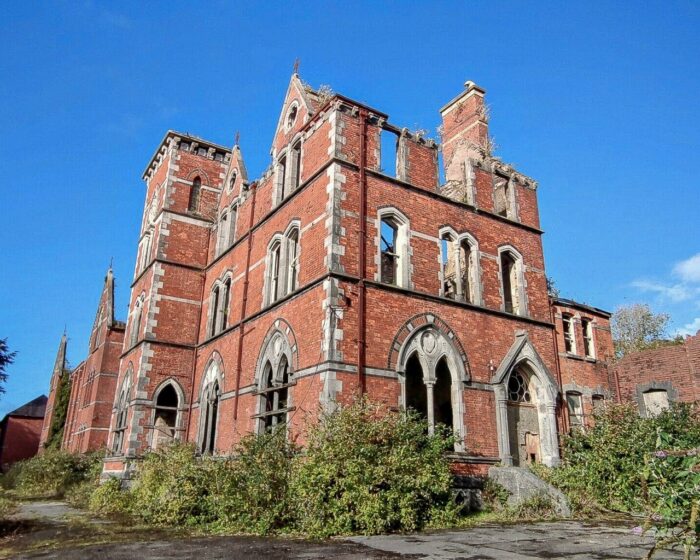
The housing crisis is the dominant social and political issue of our time. It impacts everything from demography to social cohesion to our economic well-being. We have adopted a data-driven approach to the topic. Yes, we have covered the individual stories, but we have also sought to use the underlying data to assess the causes of, and the solutions to, the crisis.
This was evident in Niall’s deep dive on property dereliction in Cork, published in September.
His work involved trawling through over 100 cases in the council’s register to identify specific sites and owners, and then cross-referencing the list with planning cases, legal files and land registration documents.
This allowed him to pinpoint key case studies in the city that epitomise where owners have sat on properties for years with no action from authorities.
Importantly, however, Niall could identify properties where developers were making clear progress with redevelopment or were being held up in the planning system, yet remained on the council’s list.
There are over 160 properties on the city council’s public-facing derelict site register, almost half of which were added after a council survey of 13,000 properties last summer. Since the start of 2023, 86 sites were added to the list, while just 24 were removed.
The true figure is likely higher, with numerous other sites currently under investigation for dereliction.
“There is no quick fix to the twin housing and hoarding crises, but hopefully, this article sheds some light on where the key problems lie and where enforcement mixed with meaningful incentives can help make dereliction a thing of the past,” he wrote in his email commentary to accompany the piece.
“John when will we know outcome of the exercise?” – Suspicion, “cover-ups” and data interrogation at INM
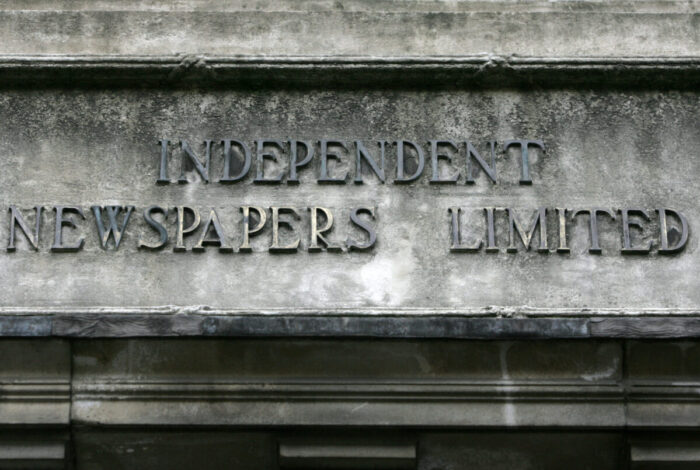
For six years, at the behest of the state’s corporate watchdog and authorised by the High Court, Sean Gillane and Richard Fleck have been investigating the business and governance of Independent News & Media (INM).
Gillane, Irish senior counsel, and Fleck, a prominent lawyer in Britain, teased through the company’s intimate secrets, perused financial documents and board minutes, and interviewed a slew of advisers, board members, and shareholders. It has been a significant body of work; Fleck was paid €2.79 million for his efforts until the end of 2023 while Gillane received €1.72 million for the same period.
In September, the two inspectors submitted their final report. It runs to 868 pages and, while the topics under consideration are dense, the report is actually quite readable. The details contained in those 868 pages paint a picture of boardroom dysfunctionality and raise profound questions about the stewardship of the country’s largest media group during the period under inspection.
We sought to cover the report extensively, initially doing a forensic examination of the issues it outlined. Tom examined the role of the board, and went through the various board minutes and exchanges between the upper echelons of the company, while Sam Smyth, one of those who had his data hacked, argued he still had no credible explanation why a bullseye target had been pinned on his back by secretive data hunters. We also examined how INM’s proposed takeover of Newstalk ruptured an already fractured relationship between the CEO and the chairman of the listed company, part-triggering a protected disclosure.
In her excellent piece, Francesca wrote: “After a six-year investigation, the purpose of the data interrogation exercise was not uncovered. Ultimately, the inspectors concluded that their work was ‘significantly hampered’ by the destruction of all the documents worked on by TDS and Mizak following the completion of their assignment. The main players have moved on from INM. Many questions remain hanging.”
Checking in, checking out: What does the future hold for the Irish hotel sector?

I caught up with Dermot Crowley, the chief executive of Dalata, while researching a feature on the sector. Days before we spoke, the five-star Shelbourne Hotel in Dublin had just been sold for €260 million. Days later, the Mount Juliet hotel and golf resort in Co Kilkenny and the Slieve Russell hotel in Co Cavan were put on the market.
Last year, the value of hotel properties changing hands in Ireland reached €350 million, down on previous years. This year, according to CBRE, the figure will top €1 billion, a number not seen since the days of the Celtic Tiger.
When we spoke, I asked Crowley what had changed. His answer was informative. When he started in the hotel trade, investors preferred commercial property, retail property and residential property investments. Now, the commercial market is stressed and retail property is under pressure. Hospitality has moved up the value chain.
“It is a more acceptable asset class,” he told me.
It is hard to disagree. International investors are making bold plays on the market here. Private equity buyers are circling. High-net-worth individuals are increasingly being lured to hotels as an investment asset class. Successful provincial hoteliers are buying up local rivals.
The pipeline of new stock is equally strong. Some 1,400 new hotel rooms opened in Dublin last year, many in the budget segment of the market, and analysis by Cushman & Wakefield suggests that the figure will be the same again this year.
The hotel industry has veered between chaos and calamity for much of the past decade. In 2012, as the economy collapsed, one in six Irish hotel rooms was under the direct control of a bank, while hundreds of properties were tethered on the brink. The industry recovered, only to be devastated by the pandemic.
However, despite this, a host of owners are looking to exit. Fáilte Ireland estimates that 13 per cent of Irish hotel rooms are now in emergency accommodation use, and hotelier Elaina Fitzgerald Kane forecasts that the number will increase further.
“Many are facing a crunch and this is a much more simplistic option than continuing to trade as normal. They are tired of keeping the show on the road, and that struggle has taken its toll,” she says. “Some have simply had enough.”
CAB and the curious case of the $9.95 Swedish email accounts

Paying nearly €10 for a bog-standard email address might seem far-fetched today but in 2002, it wasn’t so unusual.
And as Jonathan reported, it was the business model at the centre of a Criminal Assets Bureau saga that has drawn on for more than 20 years and only came to a conclusion this year with the Court of Appeal ruling that over $650,000 (€597,000) at the centre of an alleged credit card fraud, and seized by CAB, could be transferred to the State.
Mr Justice Binchy ruled against the appeal by Swedish man Harry Zeman, who had claimed rightful ownership of the money, and his company Routeback Media.
CAB claimed the money was the proceeds of a credit card scam and linked to organised crime.
It seized the money in 2011 but the origins of the case go back to 2002. All these years later, the case shows how tortuous the process can be for CAB to not only seize cash or assets but also ensure that they don’t end up back where they started.
It marks one of CAB’s longest-running cases.
Harland and (the) Wolff at the door: “We can’t afford to let it fail”
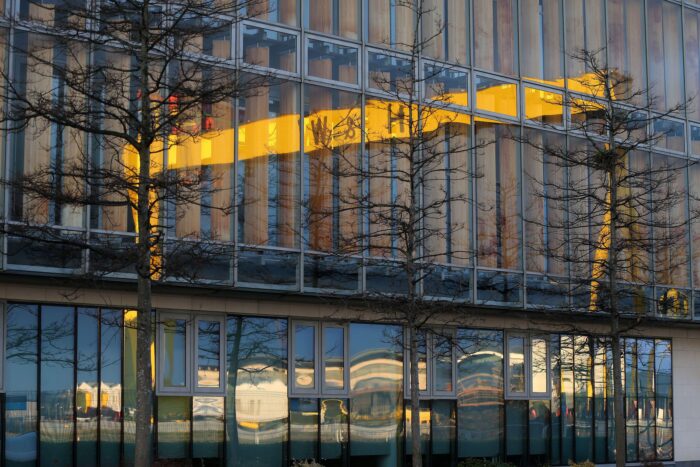
As a boy in the 1980s, Mark Magee remembers trying to cross Mersey Street in East Belfast on his way to school through the rush of traffic bringing men – packed four to a car – to work in Harland & Wolff.
The company “had a terrific workforce,” said Magee, now 56 years old. “The whole skyline was full of cranes” but then “it seemed to fizzle away”, he told Alice as he filed paperwork at a community food larder in a church on Mersey Street. As she reported, in the heart of the working-class district where generations of Harland & Wolff employees lived, food poverty is an increasing concern.
The business was teetering on the edge when Alice visited it in August. The city’s historic shipyard company was warning investors that it could not report financial information to them as a going concern and three directors had just resigned from its board.
Alice sought to understand the importance of the shipyard to Belfast – to its people and its economy.
A reprieve came late in the year, with Navantia, which is 100 per cent owned by the Spanish government, acquiring the business from administration. Around 1,000 jobs will be saved as a result of the deal, which also includes two Harland & Wolff facilities in Scotland and one in England.
Pride before a fall: Part one – Tripoli, Claridge’s and a rugby icon with a golden Rolodex

In November, the former rugby international Brendan Mullin stood with his hands behind him as he prepared to receive his sentence. His hands fluttered behind his back, but his face was stoic as sentencing began. Judge Martin Nolan said that “unfortunately the offending behaviour was very serious” and he had no choice but to give him a custodial sentence.
Judge Nolan sentenced Mullin to three years, starting that day, for stealing more than €500,000 from the Bank of Ireland. Mullin had denied all charges against him, but a jury returned guilty verdicts in 12 of the 14 charges against him.
In a two-part special, Tom delved into the rise and fall of Mullin. In part one, he explored how Mullin sought to navigate the corporate world with the ease he played rugby. In part two of his report, Tom examined the money trail and the attempts by Mullin to rehabilitate his finances.
In a footnote to the investigation, Tom contextualised the fall of the rugby hero: “At the funeral of Tony O’Reilly in May, Brendan Mullin was in attendance along with other legends of rugby like Ollie Campbell and Mick Quinn. I saw him there, but he didn’t linger afterwards. As a rugby player, like O’Reilly, Mullin was a true great. O’Reilly’s career in business scaled greater heights but ended in honourable bankruptcy when he could not repay his debts.
“Mullin, for his part, found business much harder, and ultimately his business career ended in imprisonment. He endured a decade of whispers and side-glances as gradually what he did in Bank of Ireland moved towards its public denouement. He has already paid a price, and the 61-year-old now must pay more. The court also heard of the love of his family and support of his friends: What Brendan Mullin did was wrong, but it is not the end. It is a start of sorts, a new reality.”
Game over: How Europe won its €13bn case against Ireland and Apple
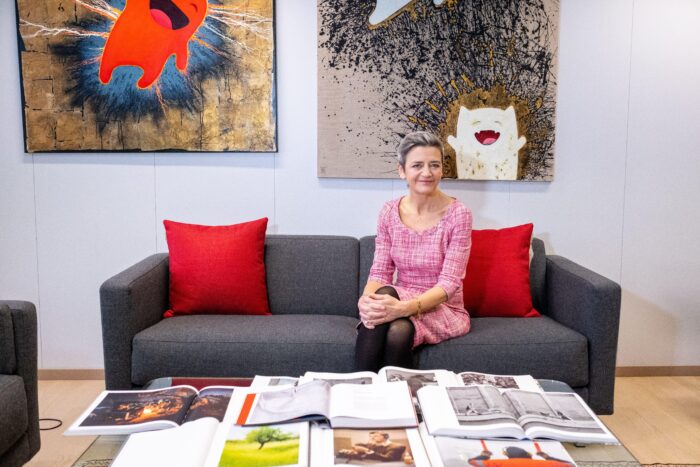
Ten years on from the start of a formal investigation into Apple’s Irish tax affairs, the European Commission this year won its case. Its meaning extends far beyond the collection of back taxes. Ireland, which fought the case, ended up receiving €14.1 billion.
I have long been critical of the decision to grant two sweetheart deals to the multinational, particularly the decision to roll over the deal in 2007. That latter decision smacked of entrenched arrogance and a blinding indifference to the rule of law. But the result, when it came, was good for Ireland – we shored up our relationship with multinationals by fighting the case, while we also got the money.
In the aftermath of the decision, Thomas, who has led the way in tracing the tax affair of US multinationals operating in Ireland, told the inside story of how Europe won its €13 billion case against Ireland and Apple.
Beyond the collection of back taxes, Margrethe Vestager, the European Commission who led the investigation, insisted on the bigger picture. “Our investigations have decisively contributed to a mind shift, a change of attitude among member states. They have helped to trigger and accelerate regulatory and legislative reform,” she said. “Take Ireland: Today, the Apple case could no longer occur. Ireland changed corporate tax residence rules to prevent Irish-incorporated companies from being stateless for tax purposes.”
As Thomas explained: “This has resulted in Apple and many other multinationals placing intellectual property assets, and the profits attached to them, in Irish-resident companies instead. The move has caused the surge in corporation tax observed in the past decade and Tuesday’s judgement comforts Ireland’s position as Europe’s intellectual property tax centre under these new rules.”
Revenue targeted investors in a €200m offshore property fund. This is how it won

Like so many things, it was conceived during the halcyon days of the Celtic Tiger.
A major financial institution tapped high-net-worth clients to invest in overseas property, promising high returns and a tax-efficient corporate structure.
The investments were made through an offshore vehicle via capital contributions and interest-free, non-recourse loans. The plan was to buy properties, flip them at a profit as the market rose, and then distribute the profits by way of dividends after liquidating the offshore entity.
The fund was initially expected to raise between €100 million and €150 million. By the time it closed, more than €200 million had been pumped into the structure.
However, as we revealed this year, more than a decade after they invested in the fund, some 70 well-heeled investors were hit with tax bills. This is the story of the tax authority’s battle over the liquidation of the multi-million euro fund.
How one fisher’s challenge to Ireland’s largest offshore wind farm set industry expectations
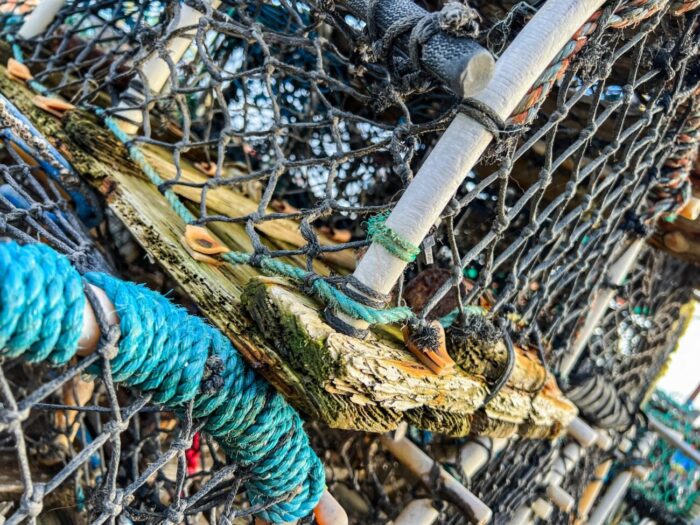
With a capacity of 1,300 megawatts, the proposed Codling Wind Park is set to be Ireland’s single largest source of electricity. The 75 turbines planned by Fred. Olsen Seawind and EDF along the coast of Co Wicklow will generate enough power for one million homes.
When fisherman Ivan Toole’s judicial review against the licence granted to Codling to prepare the development site came up in the High Court in October, Alice Chambers was there to cover the case in detail. It would set a key precedent amid the tensions between marine protection and climate targets, energy and other sea-based businesses, and national and EU rules.
“The case also highlighted how regulation has shifted in recent years as the Government seeks to speed up the development of offshore wind while balancing the need for a more systematic approach,” Alice wrote. “Some time was spent during the case arguing which government body was now responsible for the foreshore licence granted to Codling.”
While Justice Richard Humphreys did find imperfections in the licence, his judgement allowed Codling to continue with the project, partly thanks to contradictions in the arguments advanced by Toole’s legal team.
While the attention was on the Planning Bill passing through the Oireachtas, the Codling case was just as important to clarify many aspects of the consenting process for offshore wind. When Alice visited the Wind Energy Ireland trade show a few days later, the whole industry was still talking about it.
“False claims” and a “false market”: The €14.2bn Irish building materials giant and the damning Grenfell fire report
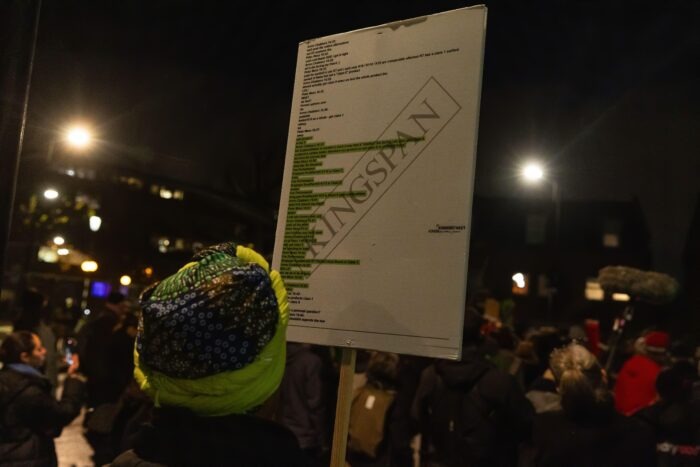
Just before 1 am on Wednesday, June 14, 2017, Behailu Kebede called emergency services to report a fire that had started in his flat. He had just been awoken by an “unusual beeping sound” and saw that his kitchen had started to fill with smoke.
He told the emergency services operator that the fire had started “in the fridge” in flat 16 on the fourth floor of Grenfell Tower in west London.
Kebede’s call was the first of many by residents within the tower. Through the night, they reported smoke from a fire that should have been relatively manageable but turned into a towering inferno that claimed the lives of 72 people in the deadliest blaze in the city since the Second World War.
Over seven years on from the disaster, the comprehensive inquiry into how such a horrific tragedy could happen in one of the world’s great cities has been completed.
The report went on to excoriate a wealth of different parties including Irish construction materials manufacturer Kingspan, which it accused it of being “disingenuous” and “knowingly creating a false market” for insulation products on buildings over 18 metres in height.
For its part, Kingspan, which has a market capitalization of €14.2 billion, welcomed the publication of the report and stated that it asserted the type of insulation used “was immaterial” to the extent of the fire.
While that may be the case, the comments made by the report are heavily damaging to the reputation of one of Ireland’s most successful businesses.
Intel and Ireland: What do the chipmaker’s woes mean for the jewel in Ireland’s FDI crown?

Since arriving in 1989, the US chipmaker Intel has built four fabrication plants and increased its staff to 5,000 people. With the majority of those stationed in Leixlip, its influence goes far beyond Co Kildare. Intel is the poster child for foreign direct investment in Ireland – the company reckons it has invested a total of €30 billion in its Irish operations up until 2022 and adds a further €2.75 billion to the Irish economy every year.
This year, however, Intel was stressed and its share price strained. The company has paused significant investments in its manufacturing operations around the world, including new fabs in Magdeburg, Germany.
In September, John Reynolds examined what the future holds for Intel’s vast Irish operations.
Kafka, the Moriarty Tribunal, and champerty
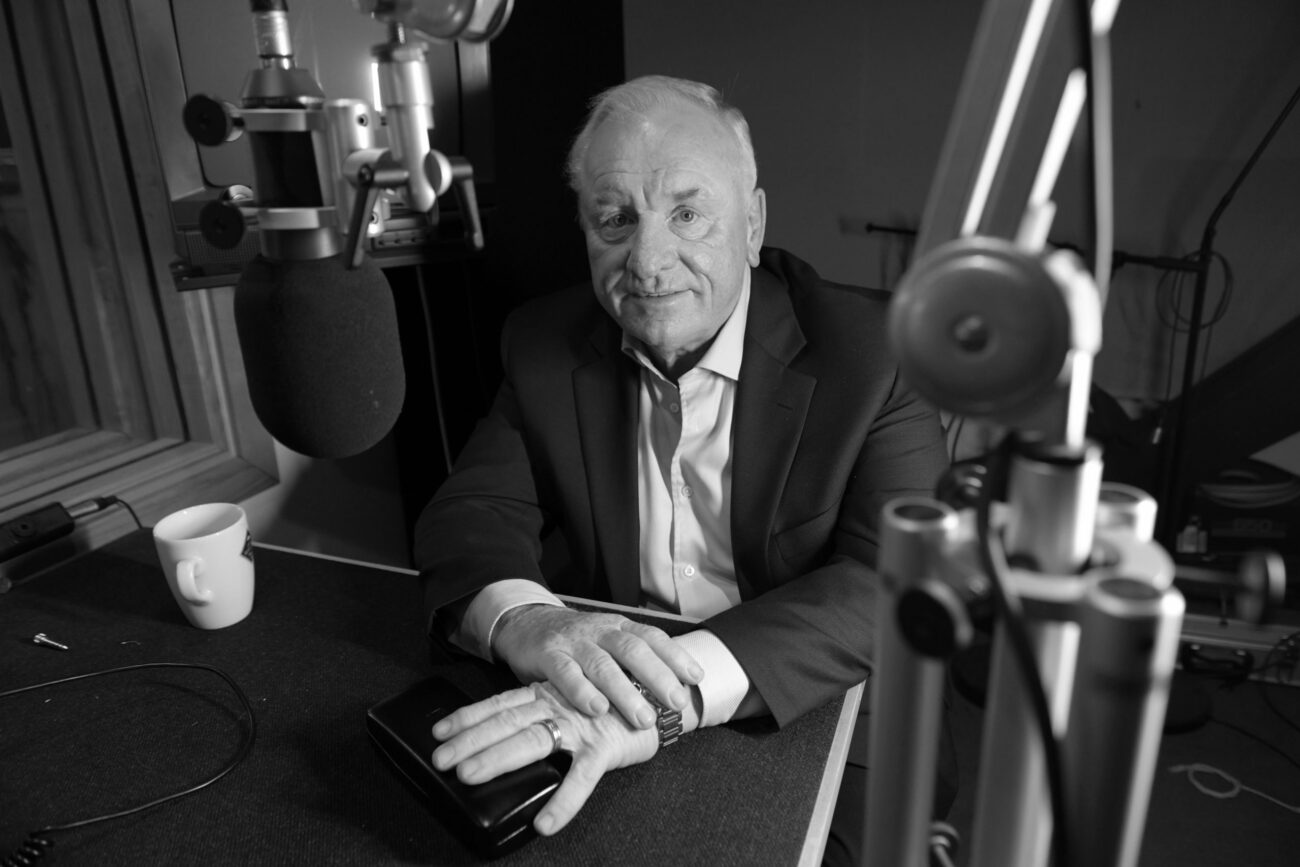
Michael Lowry, the Independent TD, is enjoying increased power and prominence at present, as he leads a group of independent deputies in government formation talks. By all accounts, it was his suggestion that Verona Murphy should put herself forward as Ceann Comhairle.
It is all a long way from the Moriarty Tribunal. However, the findings of that tribunal remain unchallenged.
The tribunal found that Michael Lowry, then minister for communications, delivered the State’s second mobile phone licence for Denis O’Brien. It said O’Brien, whose consortium won the licence, later sought to confer a material benefit on Lowry.
It found that O’Brien transferred £477,000 to various Lowry-controlled accounts, arranged for a US$50,000 loan to Fine Gael (it was returned) and supported Lowry in obtaining a £420,000 bank loan. Moriarty found that the payments were “demonstrably referable to the acts and conduct” of Lowry while he was minister. Both Lowry and O’Brien have disputed the findings, but have never legally challenged it.
Tony Boyle’s consortium, Persona, controversially came second and has been pursuing a €500 million damages action ever since. But such cases cost substantial sums of money, and Persona sought approval to have a funding relationship with UK litigation funding firm Harbour declared legal.
The High Court rejected the application. So too did the Supreme Court. Both judged that the arrangement breached the ancient laws of champerty, which ban third-party funding of a court case.
This year, however, CM Squared, a New York finance house that works with institutional investors and family offices, took an equity stake in Boyle’s company Sigma Wireless Telecom.
The sale will give the company additional firepower to fund the litigation, which is estimated to cost Persona in the region of €25 million.
The litigation is currently being case-managed by the High Court and a hearing could begin as early as next year. It has been delayed significantly due to the work of the Moriarty Tribunal.
While the findings of the tribunal’s report cannot be used as evidence in a legal action, the evidence given can be.
Revealed: The financial details of Grant Thornton Ireland’s €480m US merger

In October, Grant Thornton Ireland and Grant Thornton US confirmed they were merging their advisory and tax businesses, in a deal backed by New Mountain Capital.
The New York private equity firm had previously taken a majority stake in the US affiliate. The tie-in with the Irish firm quickly followed, and the deal is expected to be rubberstamped in the first quarter of next year.
The Currency tracked the story for some time, first revealing details of the potential merger. When it was announced, Michael obtained the financial details of the highly confidential deal. Grant Thornton Advisors LLC (GTA), the US entity, will pay a maximum price of $504 million (€480 million) to acquire the Irish operation, according to the rating agency.
The partners of “the Ireland business will contribute an initial $125 million of rollover equity”. It says the “remaining sale proceeds are subject to performance, including a maximum $90 million of cash, which we expect will be funded with drawings under the proposed delay draw term loan, balance sheet cash and the revolver”.
The Irish accountancy sector has been marked by the arrival of private equity investors and by a wave of mergers and acquisiutions. The Grant Thornton deal is the biggest yet here, but it is unlikely to be the last and it is a subject will continue to cover.
DAF Trucks dispute: Claims of clandestine behaviour, falsified invoices and a €2m “witch hunt”
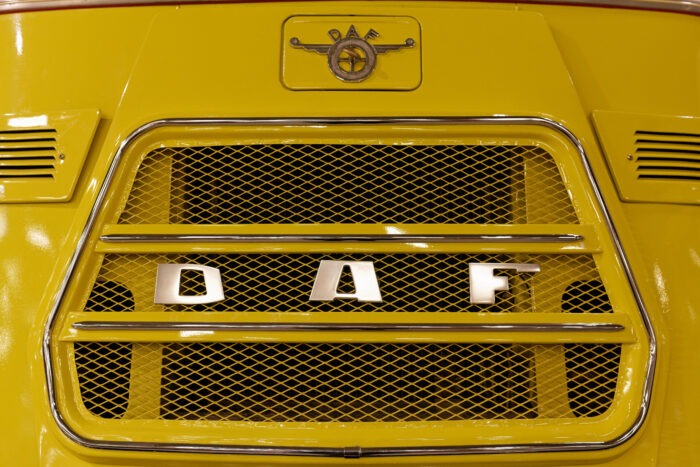
Impersonation, clandestine behaviour and a “witch hunt” over a possible €2 million in unaccounted-for funds are among the claims to newly emerge in a bitter row between the owners of a major truck distributor in Cork.
The highly contested back-and-forth allegations are being made in a lawsuit brought by father and son shareholders in DAF Truck Services (Cork) Ltd (DTS), Patrick and Stephen Ferriter, who claim they are being oppressed by three of their fellow shareholders.
The suit was launched in 2022 but new details only come to light this year. Based on filings and court documents, Francesca had the story of the dispute.
Widespread turf cutting and “insufficient action” to protect bogs: Inside Ireland’s EU case
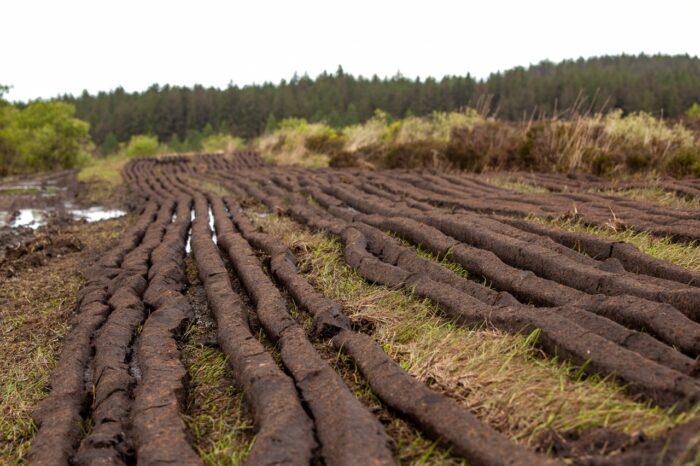
Together with fragments of ancient woodlands scattered across Ireland, our bogs – built up over thousands of years – are the country’s oldest surviving ecosystem and punch above their weight in protecting the natural world and us with it.
The cutting of peat on these bogs has a long history in Ireland too, as some see their economic value, drained and dug up as a fuel source and as growing material for horticulture and fruit growing industries.
Over the decades, commercialisation has trumped conservation, and the vast majority of peatlands in the midlands are now several degraded. And most of it was done in an unregulated manner, outside of the national licensing and planning systems.
Niall has been covering this extensively over the past year for The Currency, from the EPA’s legal battles against big commercial peat industry players to the watchdog’s hand-slapping of local authorities over lack of action over planning issues.
The EU is also keeping a watchful gaze on a range of protected bogs here where cutting is entirely illegal under EU law. However, as Niall showed in June, the State has been pathetically slow in taking action. And Brussels is keeping tabs.
As Niall explored, the EU has been tracking Irish action on the issue for over a decade, and despite numerous legal warnings to the State, did not see enough to be satisfied the issue was being attended to properly. So, in March, the European Commission announced plans to refer the Irish State to the European Court of Justice.
The State is currently preparing its defence. It is a case we will continue to track.
Power, passion and pragmatism: Kevin Cunningham on the paradox of Fianna Fáil
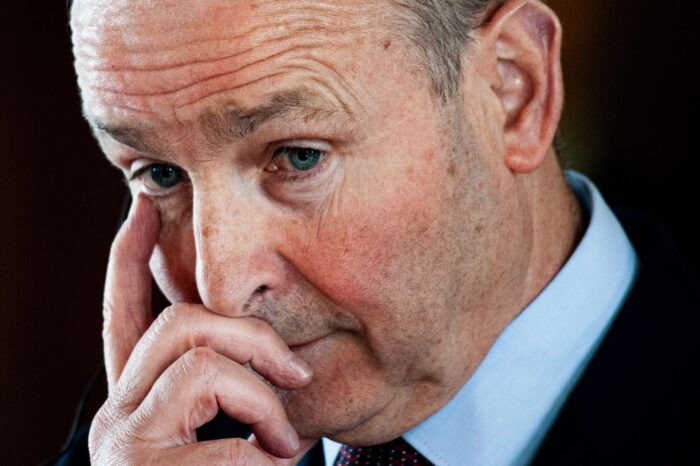
“To understand Irish politics, you must understand Fianna Fáil.”
So began Kevin Cunningham’s examination of the slow rebound of Fianna Fáil after its electoral collapse in the wake of the financial crisis. Cunningham, a political analyst and pollster, used 12 different datasets to explain why the party had rebuilt its support. He asked two seemingly contradictory questions: Why hasn’t it returned to its former glory, and how has it maintained such steadfast support?
The way Cunningham seems it, while Fianna Fáil’s collapse can be explained by the financial crisis, unlike similar centre-right parties in Greece, Spain and Portugal, it hasn’t fully recovered.
Jack Lynch once described the party as “representative of all people… farmers, workers, businessmen, employers”, while historian Diarmuid Ferriter called it “a complex coalition of traditionalists, modernizers, visionaries, conservatives, radicals, cranks, and optimists”. Academics described Fianna Fáil as a “catch-all’ party due to its ability to win support across social groupings.
However, as Cunningham argued, its broad support “reflected the homogeneity of Irish society at the time of its dominance, a time in which Ireland was somewhat more traditional and conservative in its outlook”, adding: “By 2002, you could see how the party’s vote was more pronounced among older people, among those who attended church every week and among those with lower levels of educational attainment.”
Anatomy of a fall: What went wrong at the Peter McVerry Trust?
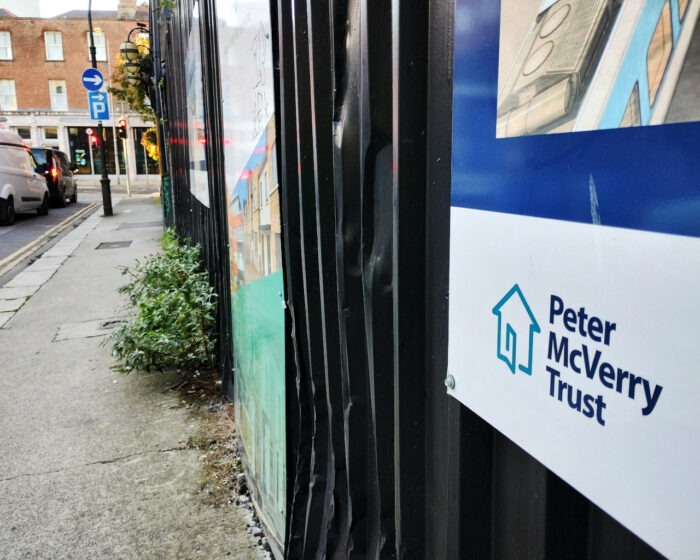
In September 2023, Tom revealed that the accountancy firm PwC had identified a number of serious financial issues in the Peter McVerry Trust that threatened the future of one of Ireland’s best-known homeless and housing charities. PwC completed its draft report on September 14, 2023, and the Department of Housing was alerted of the solvency fears raised by PwC among other concerns about its finances.
In the months that followed, a string of damaging revelations would emerge about the charity leading to a number of official investigations and examinations of its operations and finances.
Late this year, the Approved Housing Bodies Regulatory Authority (AHBRA), a watchdog overseeing not-for-profit housing providers funded by the State, issued its report. The findings complement those in a separate examination commissioned by the Charities Regulator, released in October. Neither paints the charity in a good light. Far from it.
As Niall reported: “Combined, they make for grim reading, laying bare mismanagement of funds, governance failings, poor handling of conflicts of interest, breaches of regulatory standards and lack of board oversight on a myriad of financial matters that led the charity down its current path.
“The reports examine much of the topline management issues and conflicts of interest that brought much light onto the charity’s governance and were widely covered in the media over the past year.
“But the reports go much further into the nitty gritty of governance issues and board oversight on a myriad of administrative matters which, while seemingly mundane on the surface, encapsulate the management and oversight problems that plagued the charity.”
CZ is going to prison. But he leaves behind a network of Binance firms in Ireland

Changpeng Zhao, or, as he is known, CZ, the founder and former chief executive of Binance, the world’s largest cryptocurrency exchange, pleaded guilty to anti-money laundering violations in the US last year and resigned his CEO post while Binance tallied up $4.3 billion in fines. This year, he was sentenced to four months in prison.
Central to the cases against Binance was that its cryptocurrency exchange was used by illegal actors and the company had failed to implement proper anti-money laundering systems. The investigations claimed that terrorist groups used Binance to move their money around, that the platform was used for transactions related to drugs and was used by people in sanctioned countries like Iran.
Binance, its new chief executive Richard Teng and its board of directors now face questions over how to move forward.
And Ireland is a spoke in that wheel, as Jonathan revealed when he outlined the flow of company money through Irish firms. Binance has established nine entities in Ireland and Jonathan did a full analysis of their filings.
Battle begins to be Lord of Castlehyde between dance star and lenders
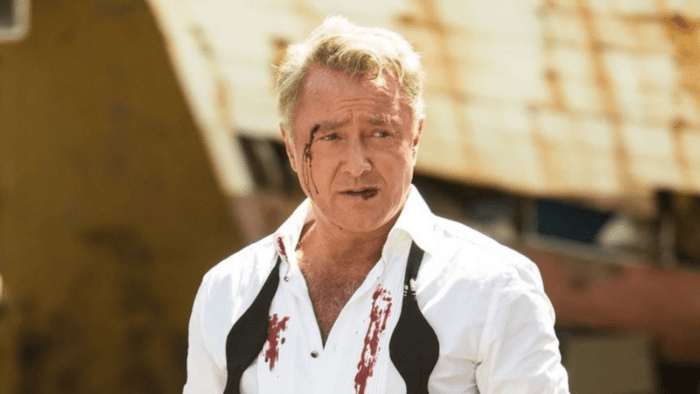
On November 30, The Currency first revealed that Blackbird Film Productions, a British-registered company controlled by the dancer Michael Flatley, and Flatley personally, had issued High Court proceedings in Dublin against Novellus, a Dublin-based property and bridging finance lender.
In the weeks that followed, we have published a host of related stories, extensively reporting on Flatley’s efforts to thwart Novellus from appointing receivers over his Co Cork mansion Castlehyde. Novellus is, incidentally, funded by the family office of JP McManus, as reported separately by Thomas.
As Francesca wrote in recent days: “Flatley is the guarantor of a €5.7 million loan advanced by Novellus in September 2023 to Blackbird Film Productions, the vehicle for the entertainer’s 2018 spy-thriller Blackbird.
“Novellus claims the secured loan went into default almost immediately after it was drawn down. In late November, the lender appointed Kieran Wallace and Andrew O’Leary of the accountancy firm Interpath as receivers to Castlehyde by Novellus.
“Flatley denies the loan is in default and alleges bad faith by the lender prevented his side from refinancing the borrowings.”
Behind the scenes at Tinakilly: The multi-million rift behind a dream wedding venue
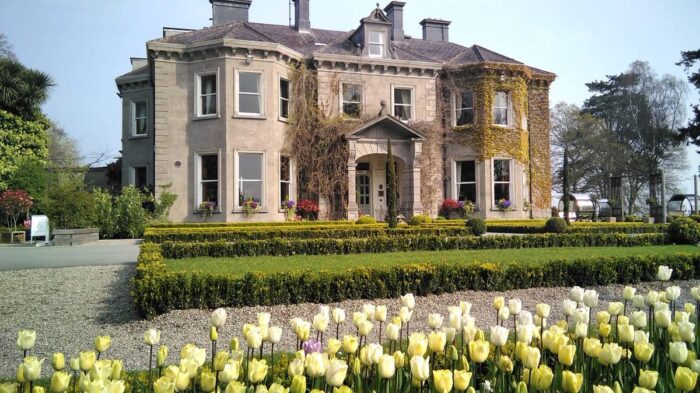
As business fallouts go, a row over access to a hotel suite in Spain is not a typical trigger. But for Gerard Lane and Denis Connolly, owners of Co Wicklow wedding destination Tinakilly House, it was just such a disagreement that planted the seed of discontent in a lengthy business association.
Introduced by a mutual friend in 2013, the men — neither in their first flush of youth — hit it off.
The same year, they clubbed together to buy Tinakilly House Hotel in Rathnew from receivers. The market was slowly recovering from the great crash of 2008 and they paid circa €1 million for the property.
In 2017, the duo went again, this time acquiring a boutique hotel in the south of Spain for around €2.5 million. Finca Monasterio is an 18th-century former monastery near Sotogrande in the province of Cadiz. Again the focus is on offering couples the destination wedding of their dreams.
As Francesca reported: “The two hotels appear to have been excellent investments with well-run operations. The combined market value of the businesses is estimated at over €12 million, €7 million for Tinakilly and around €5 million for the Finca Monasterio, according to Lane. But the business relationship is not in such a healthy state.”
How Gazprombank (nearly) filled a €750m hole in the Irish balance sheet of Ikea’s retail arm

When full-scale war broke out in Ukraine nearly three years ago, the global network of companies behind Ikea stores and associated business interests faced the same headache as other multinationals operating in Russia: Stay or go, and at what price?
According to investigative work by Thomas, the eventual price was not as high as previously expected.
The Ingka Group, which owns most Ikea stores in the world as well as other assets including shopping centres, had been investing heavily in the country and the unwinding of its Russian presence took a year and a half to complete.
After “pausing” Ikea retail operations in Russia and closing its 17 stores in the country in March 2022, the Ingka group closed them permanently the following summer and sold off any remaining Ikea stock to the Russian online retailer Yandex Market that November. Following a lengthy paper trail, Thomas told the story of how Gazprombank (nearly) filled a €750m hole in the Irish balance sheet of Ikea’s retail arm.
